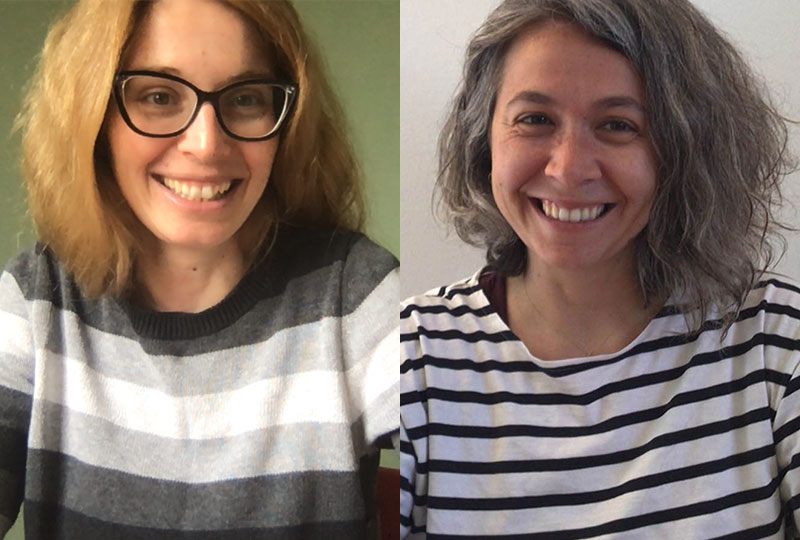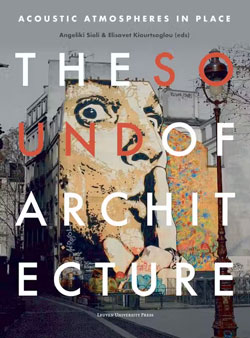-
Membership
Membership
Anyone with an interest in the history of the built environment is welcome to join the Society of Architectural Historians -
Conferences
Conferences
SAH Annual International Conferences bring members together for scholarly exchange and networking -
Publications
Publications
Through print and digital publications, SAH documents the history of the built environment and disseminates scholarshipLatest Issue:

-
Programs
Programs
SAH promotes meaningful engagement with the history of the built environment through its programsMember Programs
-
Jobs & Opportunities
Jobs & Opportunities
SAH provides resources, fellowships, and grants to help further your career and professional life -
Support
Support
We invite you to support the educational mission of SAH by making a gift, becoming a member, or volunteering -
About
About
SAH promotes the study, interpretation, and conservation of the built environment worldwide for the benefit of all
The Sound of Architecture
May 30, 2023
by
Helena Dean
How a conference session evolved into a published collection of essays
In 2022, Leuven University Press published The Sound of Architecture: Acoustic Atmospheres in Place, edited by Angeliki Sioli and Elisavet Kiourtsoglou. The book came out of an SAH conference session organized by the two scholars. We interviewed the two collaborators to find out how an SAH session became an edited volume.

Angeliki Sioli and Elisavet Kiourtsoglou have been friends since 1999, when they met during the first year of their bachelor’s program at the University of Thessaly. After graduation, they pursued PhDs at different schools—Sioli in the history and theory of architecture at McGill University and Kiourtsoglou in architecture from Université Paris 8—but kept in close contact through weekly Skype calls. It wasn’t until 2018, however, that they decided to collaborate professionally.
“At some point we were like, ‘Why don’t we try something together?’ So, we tried to bring together our interests,” Sioli explains. Sioli, now an assistant professor in the Faculty of Architecture and the Built Environment at Delft University of Technology, and Kiourtsoglou, an assistant professor in the Department of Culture, Creative Media and Industries at the University of Thessaly, decided to submit a session proposal for the Society of Architectural Historians’ 2019 Annual International Conference.
The session, “The Sound of Architecture: Acoustic Atmospheres in Place,” was included in the call for papers distributed by SAH in April 2018. According to Sioli, the two friends and collaborators were interested in examining “how the experience of sound within particular locations, in situ, very specifically, could actually allow us to study and understand space differently.” This, adds Kiourtsoglou, is because “sound is an element of our memory, that comes into our understanding and experience of the place. Atmosphere is also part of our history in a way.”
The topic struck a chord with other scholars. More than 25 abstracts were submitted for consideration and Sioli and Kiourtsoglou had the difficult and unenviable task of whittling them down to the few that would ultimately comprise their session. To make their selections, the pair booked a two-week stay at a rental house on the island of Aegina in the summer of 2018. “We already knew that there was interesting material, so there were some options and ideas, but at that moment we were focused on figuring out how we could put them together and what would be the best grouping,” Sioli explains. “It was quite hard,” Kiourtsoglou continues, “we had all the abstracts on the wall, trying to figure out which is the best, what we have to pull out… It was kind of a puzzle.”
As Sioli and Kiourtsoglou were close to making their final decisions, they got an email from Mirjam Truwant, acquisitions editor at Leuven University Press. Truwant had read their session description in SAH’s call for papers, knew the topic was of interest to the press, and asked if they would be interested in developing the session into a book.
Sioli and Kiourtsoglou were excited by the request. Says Sioli, “The beauty is that Leuven University Press really follows SAH.”
Sioli and Kourtsoglou told Truwant that they were interested in developing the session into a book proposal. “For us it was very helpful and very honoring to have this proposal from Leuven University Press,” Kiourtsoglou says. “This took us on a very long journey of two years.”
In April 2019, Sioli and Kiourtsoglou traveled to Providence, Rhode Island, to co-chair their session at the SAH conference. It was Sioli’s second SAH conference and Kiourtsoglou’s first. Despite having just broken her leg, Kiourtsoglou said that there was no way she would have missed the conference. She found the variety of topics at the conference appealing. Having been trained as an architect and not an architectural historian, Kiourtsoglou felt “it was a window to a totally different way of working.”
“There is a high level of rigor and quality in the discourse that is super refreshing and, of course, that is why you want to be a part of it,” Sioli notes. Sioli added that social events such as the breakfast for session chairs and speakers are an important part of the conference. “There is a very beautiful social aspect that the conference provides. That is really valuable.”
Their session was well received, but Sioli and Kiourtsoglou decided to wait until the summer of 2019 to start work on the book proposal. “We wanted to wait to see the outcomes of the conference, because at the conference we had four fully developed papers. We knew of the quality,” Sioli says. “And that’s why we started with the book proposal afterwards, because we wanted to make sure that we had something strong.”
Their advice to those looking to publish is to start with the book proposal and work from there. “Check online, because most presses have a template for what they need when it comes to book proposals,” Sioli suggests. While there are some similarities between what presses are looking for—such as how a book will fit into the existing bibliography—they each have specific areas that are of interest to them. Sioli found that looking at the requested format for the book proposal before drafting it “worked for me in a very imaginative way,” and helped shape the manuscript. “I think it would be a different book if it were addressed to a different press.”
Sioli and Kiourtsoglou submitted the book proposal in December 2020 and spent a year working on the manuscript. They invited some of the contributors who submitted abstracts for their session as well as others who specialized in the field to be a part of the publication. The editors and contributors faced many challenges during the pandemic, including limited access to archives.
“I have to say, people were very determined,” Sioli says. With contributors throughout Europe and the U.S., constant communication was vital to let everyone know how the project was progressing. “We didn’t know all these people in person, but after all this it felt like we knew them so well.” Kiourtsoglou says, “It was like a family.”
Even still, “editing a book like that, it was also learning about managing people,” Kiourtsoglou points out. It was about learning how to go through texts and critique people’s work in a very tactful way. “If diplomacy’s not your strong suit, you shouldn’t try it at all. Write a monograph!” Sioli adds with a laugh.

Their edited volume, The Sound of Architecture: Acoustic Atmospheres in Place, was published by Leuven University Press in 2022. The collection of essays explores the acoustic atmospheres of diverse architectural environments and examines how sound and its atmospheres transform architecture and space. Contributors to The Sound of Architecture include Anna Ulrikke Andersen (University of Oxford), Timothy Carey (Independent Scholar), Ricardo L. Castro (McGill University), Joseph L. Clarke (University of Toronto), Carlotta Darò (ENSA Paris-Malaquais), Michael de Beer (Independent Scholar), James Deaville (Carleton University), Ross K. Elfline (Carleton College), Clemens Finkelstein (Princeton University), Federica Goffi (Carleton University), Klaske Havik (TU Delft), Paul Holmquist (Louisiana State University), Pamela Jordan (University of Amsterdam), Elisavet Kiourtsoglou (University of Thessaly), Alberto Pérez-Gómez (McGill University), Cécile Regnault (Lyon School of Architecture), Angeliki Sioli (TU Delft), Karen Van Lengen (University of Virginia), and Michael Windover (Carleton University).
When Sioli and Kiourtsoglou first proposed their session five years ago, they had no idea that their collaboration would evolve into a published collection of essays by a group of international contributors. Reflecting on their journey, Kiourtsoglou shares that “what this process also taught us is that small steps make a big difference.”

